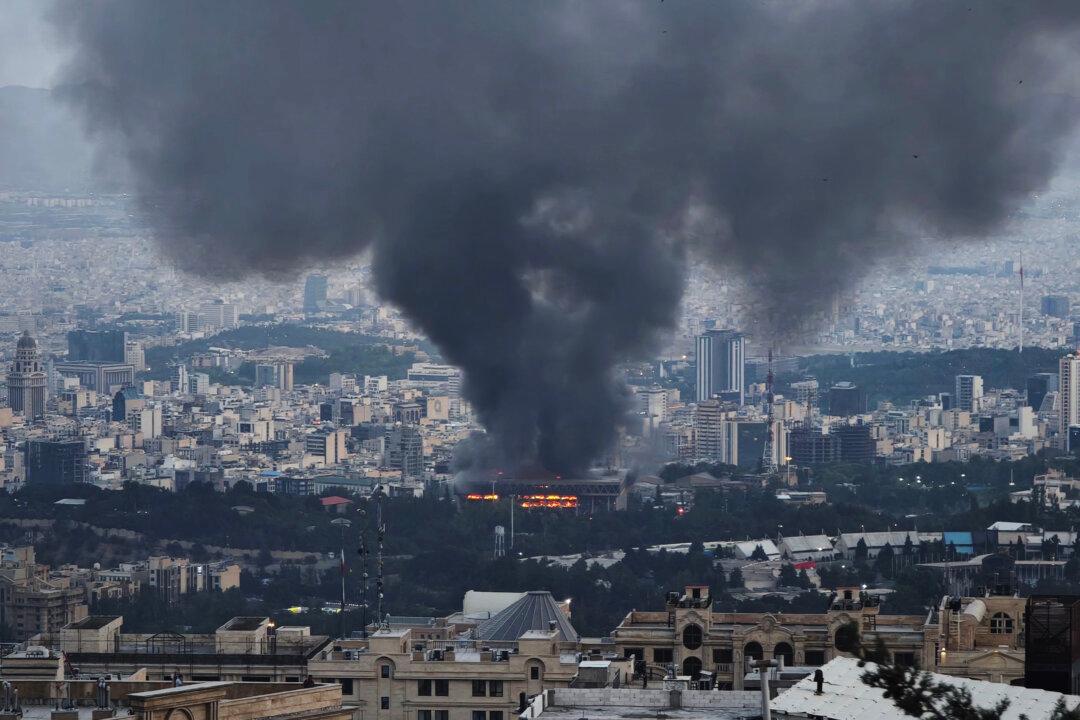Israel’s surprise military campaign against Iran has reshaped the political map of the Middle East in less than a week, as Israeli forces have claimed several victories over Iran’s political and military apparatus.
The operation, code-named “Rising Lion,” rapidly expanded from an initial airstrike on June 13 to a full-blown operation to destroy Iran’s nuclear and ballistic missile programs within a matter of days.
The rapid successes of the IDF were not without their toll, however, and both sides have suffered many civilian casualties, including hundreds of dead in Iran and hundreds injured in Israel.
Iran’s Nuclear Program Compromised but Operational
Rising Lion’s first primary target was Iran’s nuclear program, which a nuclear watchdog group for the United Nations stated earlier in the year had enriched a significant amount of uranium up to a 60 percent threshold.That purity is a short technical step away from being converted to the 90 percent required for a nuclear weapon, but Iranian leadership maintains that it does not seek a nuclear weapon.
On June 13, Israeli Prime Minister Benjamin Netanyahu said that Iran was engaged in a secret attempt to build nuclear weapons and that such a pursuit posed “a clear and present danger to Israel’s very survival” and needed to be thwarted at any cost.
As such, Iran’s uranium enrichment facilities in Natanz were Israel’s first major target in the operation.
The Natanz Enrichment Complex is the cornerstone of Iran’s nuclear infrastructure and serves as the nation’s central facility for enriching uranium. Much of the complex is located deep below ground and behind reinforced concrete walls designed to protect the facility from missile attacks.
Israel’s strikes sought to destroy the above-ground pilot enrichment plant there and power stations used to operate the facility, although the condition of underground facilities remains uncertain.
Airbases and Missile Silos Destroyed
Israel also sought to leverage its campaign of airstrikes to eradicate much of Iran’s ballistic missile program, including dozens of underground missile facilities and more than 100 surface-to-surface missile launchers.By June 16, roughly a third of Iran’s missile launchers had been destroyed, along with several helicopter and air defense wings located at airbases throughout Western Iran.
Strikes against bases in Hamadan, Kermanshah, Subashi, and Tabriz eliminated dozens of aircraft, missile facilities, drones, and radar systems.
The radar station in Sobashi was a particularly critical node in Iran’s air defense architecture until its destruction, offering Iran persistent, long-range surveillance of the nation’s neighbors to the west.
Air Dominance Over Much of Iran’s Skies
Four days into Rising Lion, the Israeli military claimed that it had achieved air superiority above the Iranian capital of Tehran and could fly over the city with near impunity.It remains unclear what kind of resistance Iranian fighter jets were able to put up against the IDF incursions.
Much of the Iranian air force’s fighter fleet before Rising Lion consisted of U.S.- and Soviet-made aircraft that dated to the Cold War, while others were of Chinese origin or were domestically built aircraft based on Cold War-era designs.
Conversely, Israeli air capabilities boast a wide array of multirole fighters, including a variant of the U.S. fifth-generation F-35 Lightning II.
As part of the mission to gain air superiority, Israeli forces targeted and destroyed 10 command centers located in Tehran, which the IDF said supported military and intelligence operations outside of Iran.
Iranian Armed Forces Decapitated
Several key victories were won by Israeli forces in the opening week of the conflict, as targeted airstrikes at Iranian military bases and across populated areas such as Tehran involved the successful assassination of high-ranking military personnel.Multiple generals and other top officers who served on the Iranian military’s general staff, oversaw various headquarters, and led the IRGC and its aerospace wing were killed in the strikes.
Among the most notable were the head of the IRGC, Maj. Gen. Hossein Salami; the chief of staff of the Iranian Armed Forces, Maj. Gen. Mohammad Hossein Bagheri; the ranking IRGC commander, Maj. Gen. Gholam Ali Rashid; and the head of the IRGC missile program, Brig. Gen. Amir Ali Hajizadeh.
Strikes also killed numerous top intelligence officials within the Iranian military and high-ranking nuclear policy experts and scientists.
The Israeli campaign also destroyed several military facilities associated with the IRGC’s Quds Force, which specializes in unconventional warfare.
One base in Piranshahr, near the Iran–Iraq border, served as a hub for elements of both the Iranian army and the IRGC to facilitate the cross-border flow of arms and troops to various proxy groups such as Hamas, Hezbollah, and the Houthis.
Regime Change in Iran a Possibility
Netanyahu said on June 16 that Israel was on the “path to victory” in achieving its two main aims of wiping out Iran’s nuclear program and destroying its ballistic missiles.The sudden killing of so many Iranian military commanders and the loss of control of its airspace could prove the biggest test of Iran’s political system since Islamist forces ousted the nation’s historical monarchy in 1979.
Netanyahu has publicly urged the Iranian people to rise up in open rebellion against the Supreme Leadership Authority and overthrow the current government.
That rhetoric has not won the favor of many of Israel’s partners and allies, however, with some leaders warning that a leaderless Iran could create mass chaos throughout the Middle East.
Speaking on the sidelines of a G7 summit earlier in the week, for example, a spokesperson for British Prime Minister Keir Starmer said UK leadership saw significant destabilization in the region as a no-win scenario.







